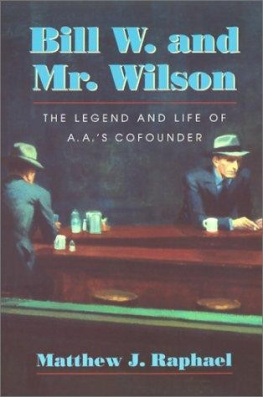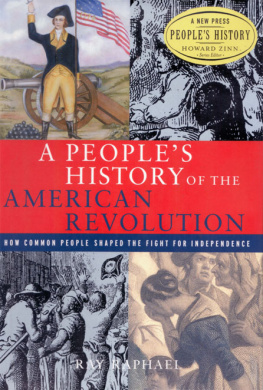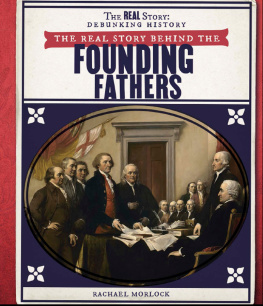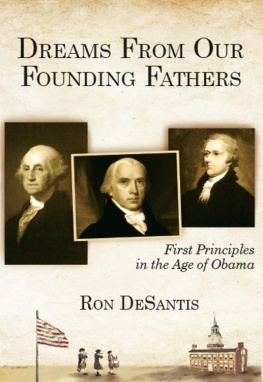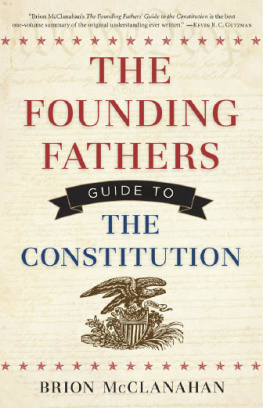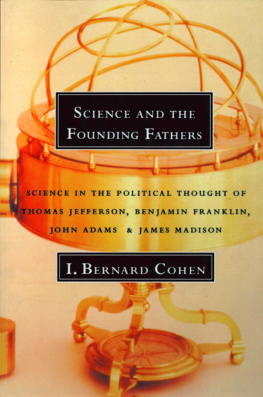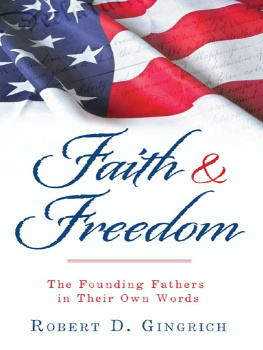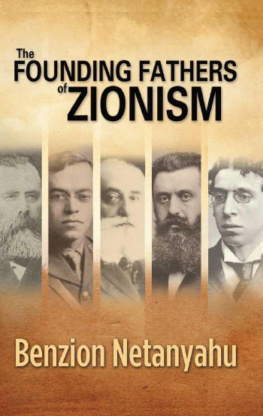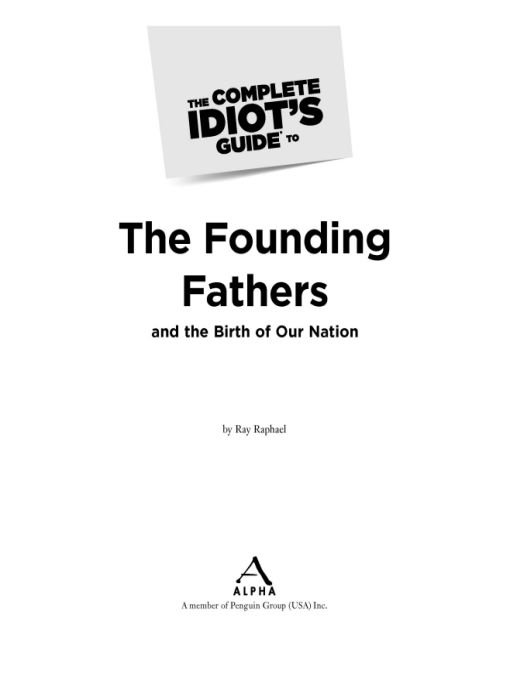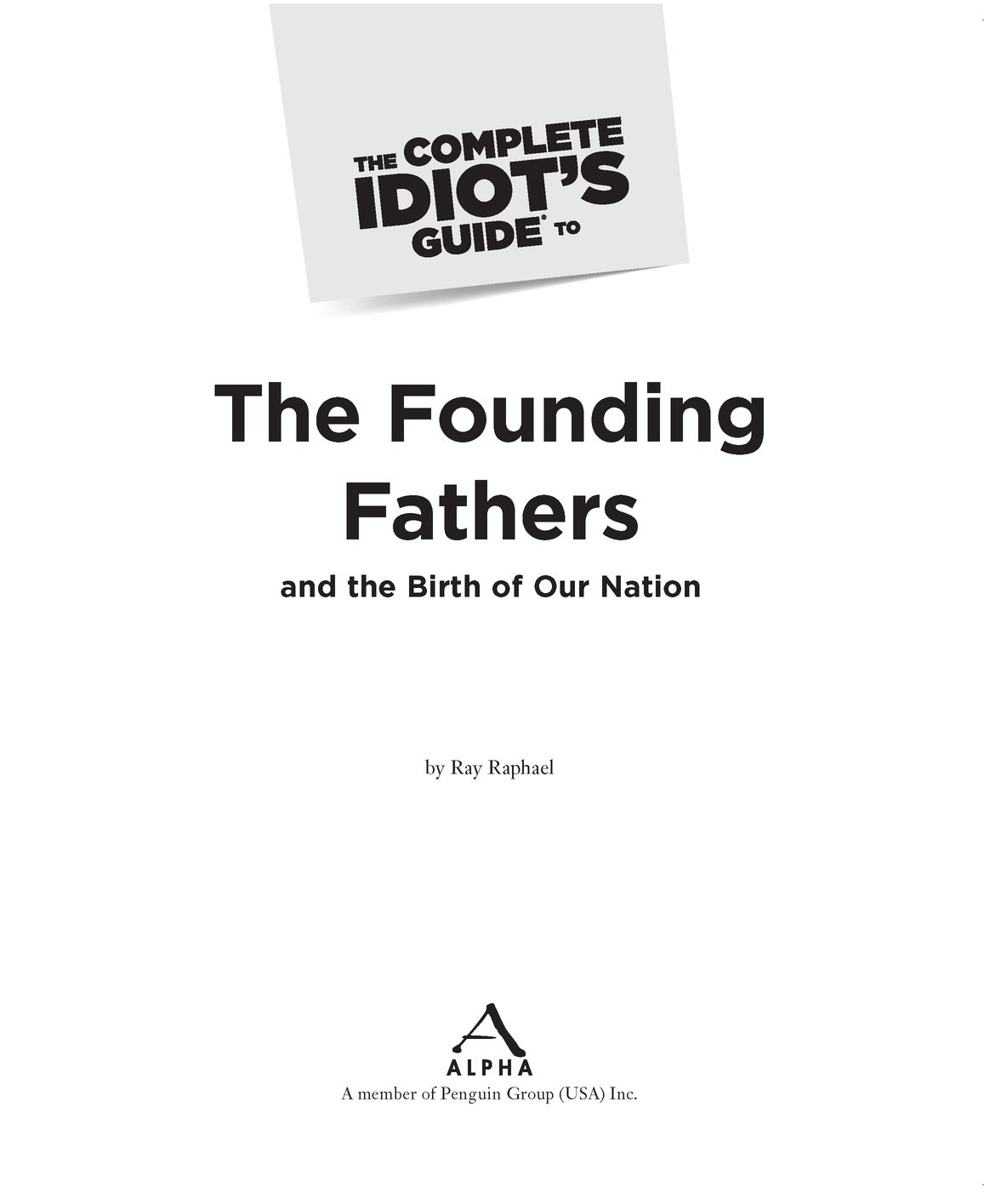Table of Contents
Introduction
Lets imagine its the tenth anniversary of our nations birth, July 4, 1786. The Revolutionary War is over, but the Constitution has yet to be written and adopted. At this critical juncture, smack in the middle of what we now call the Founding Era, we decide to take a poll. We ask a sampling of Americans, Who do you think are the ten most important founders of your young nation, the people who will be remembered in the history books?
Two names will be on everybodys list: George Washington and Benjamin Franklin. After that there will be some variation, but most respondents will probably list the Farmer (John Dickinson) and the Financier (Robert Morris). Dickinsons famous Letters from a Farmer in Pennsylvania galvanized opposition to imperial policies in the 1760s, and after independence he penned the Articles of Confederation, the nations constitution in 1786. Morris personally saved the country from financial ruin and ran it almost single-handedly from 1781 to 1784.
After naming these four nationally prominent figures, Founding Era Americans would probably display regional bias. Virginians might put forth Peyton Randolph, Patrick Henry, Richard Henry Lee, George Mason, George Wythe, Edmund Pendleton, or Thomas Jefferson, but few would include James Madison, a littleknown state legislator. New Yorkers might mention John Jay, Robert R. Livingston, George Clinton, or Philip Schuyler, but I doubt any at this date would include Alexander Hamilton, Washingtons former aide-de-camp and Schuylers son-in-law. We could go down the states, one-by-one, to get more names. Some lists would probably include martyrs like Joseph Warren (killed at Bunker Hill) and Richard Montgomery (lost in the attack on Quebec) or folk military heroes like Old Put (Israel Putnam), the Swamp Fox (Francis Marion), the Carolina Gamecock (Thomas Sumter), or Lighthorse Harry (Henry Lee).
Now, more than two centuries later, our sense of history has narrowed and a poll would yield few candidatesWashington, Franklin, Adams, Jefferson, Madison, Hamilton, and just a small number of others. In this book, those nominees will take their rightful places on historys stage, but here you will also become acquainted with leaders who were recognized in their time, if not in ours. You will even meet an entire founding generationthe body of the people, in the language of that day. Intersecting at critical moments, debating and quarreling or uniting, all struggled to create a new nation.
That nation was like no other. There would be no kings or lords. The government would be rooted exclusively in the people, a concept called popular sovereignty. Any American who wanted a seat at the political table had to buy into that basic ideal.
But the Founding Fathers were not like a team of high-bred horses pulling a carriage in sync. Although they shared a common goal, the good of their nation, they had different answers to the hard nuts-and-bolts questions of nation-building. How, and how much, should government tax the people? Should the wealthy wield political power? Should government and religion intermingle? Who should be the final arbiter of the laws? How can government provide security and stability without interfering with personal liberties? Replies mattered. With one founder responding one way and the next founder another, they could be a contentious lot.
The nations founding didnt happen in a day or even a decade but over the course of a third of a century. The story is vast, and it is both powerful and entertaining. The Complete Idiots Guide to the Founding Fathers will take you through the years.
With a tale this grand, there is only one place to start: the beginning.
How This Book Is Organized
Part One, Independence, follows the colonists as they forge a new identity. People who would later be founders are Brits at the start, and proud of it. But they have no representatives in Britains government, so when Parliament taxes them to pay for the expanding empire in North America, they resist. In 1774, after years of protest, Britain strips colonists of rights they have always known. Throughout the Massachusetts countryside, rebels respond by casting off tyrannical British rule. The Kings Army retaliates by marching on Lexington and Concord, and war breaks out. Finally, after more than a year of fighting, Congress bows to popular pressure and declares independence.
Part Two, First Drafts, tells of the countrys early efforts to act like one. The states form governments, but the first attempt at a federal constitution, the Articles of Confederation, leaves Congress with little power. Systems break down. War debts are huge, and the struggling nation almost goes belly-up.
Part Three, A New Plan, discusses a remarkable revolution, this one in favor of a strong national government. But what will such a government look like? At the Constitutional Convention in 1787, delegates argue long and hard over what powers should be given to a congress, a president, or a supreme courtand what powers should be left with the states.
Part Four, The Launch, reveals that the Constitution is not an easy sell. Each state has to decide whether it will approve, or ratify, a plan that was conceived behind closed doors. The debate is rancorous and the outcome in doubt. In the end, the Constitution barely passes in three key states. To assure people that the new government will not take away the peoples liberties, a reluctant Congress finally proposes a Bill of Rights.
Part Five, Partisan Divide, tracks the political maneuvering during the administrations of our first three presidents. People argue about the legitimate powers of government and who within government should wield those powers. Its partisan politics all the way, complete with name-calling, press wars, and competing Fourth of July parades.
Part Six, The American Way, showcases men and women who struggled for ideals we now embracepolitical democracy, social equality, and economic opportunity for all. This brings the founding era more up-to-date. We conclude by watching successive generations of Americans venerate one group of founders or another, even if facts must be altered in the process. The manufactured stories are sometimes imaginative, but they help unite the nation.
Extras
To lead you through a treasure-trove of information, The Complete Idiots Guide to the Founding Fathers offers pointers of various kinds. An appendix takes you to Internet sites that provide readily accessible primary sources. These allow you to learn history straight from the people who were actually making things happen. Consulting firsthand materials is both more exciting and more accurate than relying on secondhand accounts written decades or centuries later.
Four types of sidebars will help you get the main points. They offer meanings of important concepts and glimpses of key people. They also present original quotations and reveal particular facts that bring out the story. Look for:
FOUNDER ID
In these thumbnail biographical sketches, youll meet famous people and some you never knew. Treat these like introductions at a party. You wont learn all there is to know about the people you meet here, but youll learn enough to decide whom you want to get to know better.



